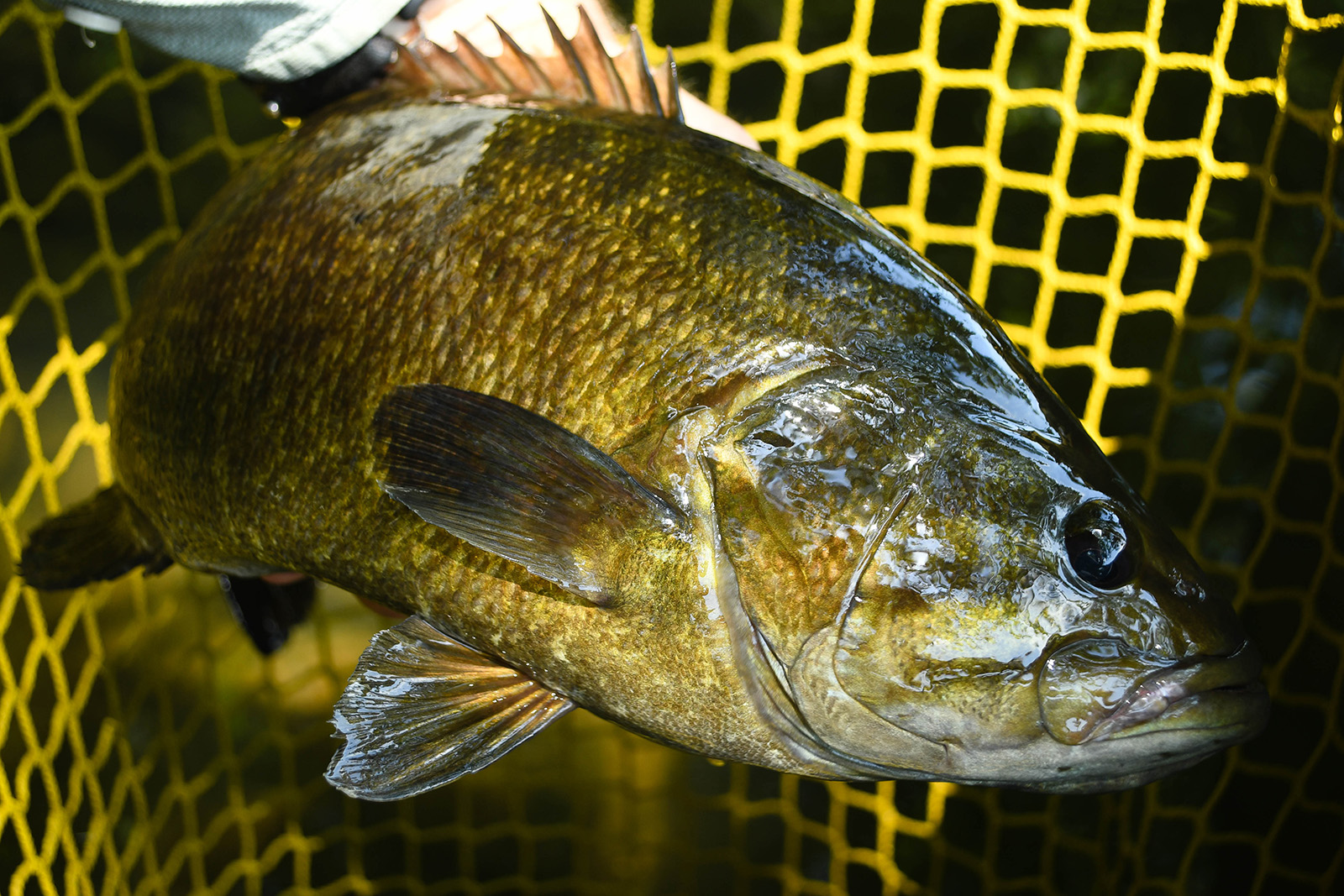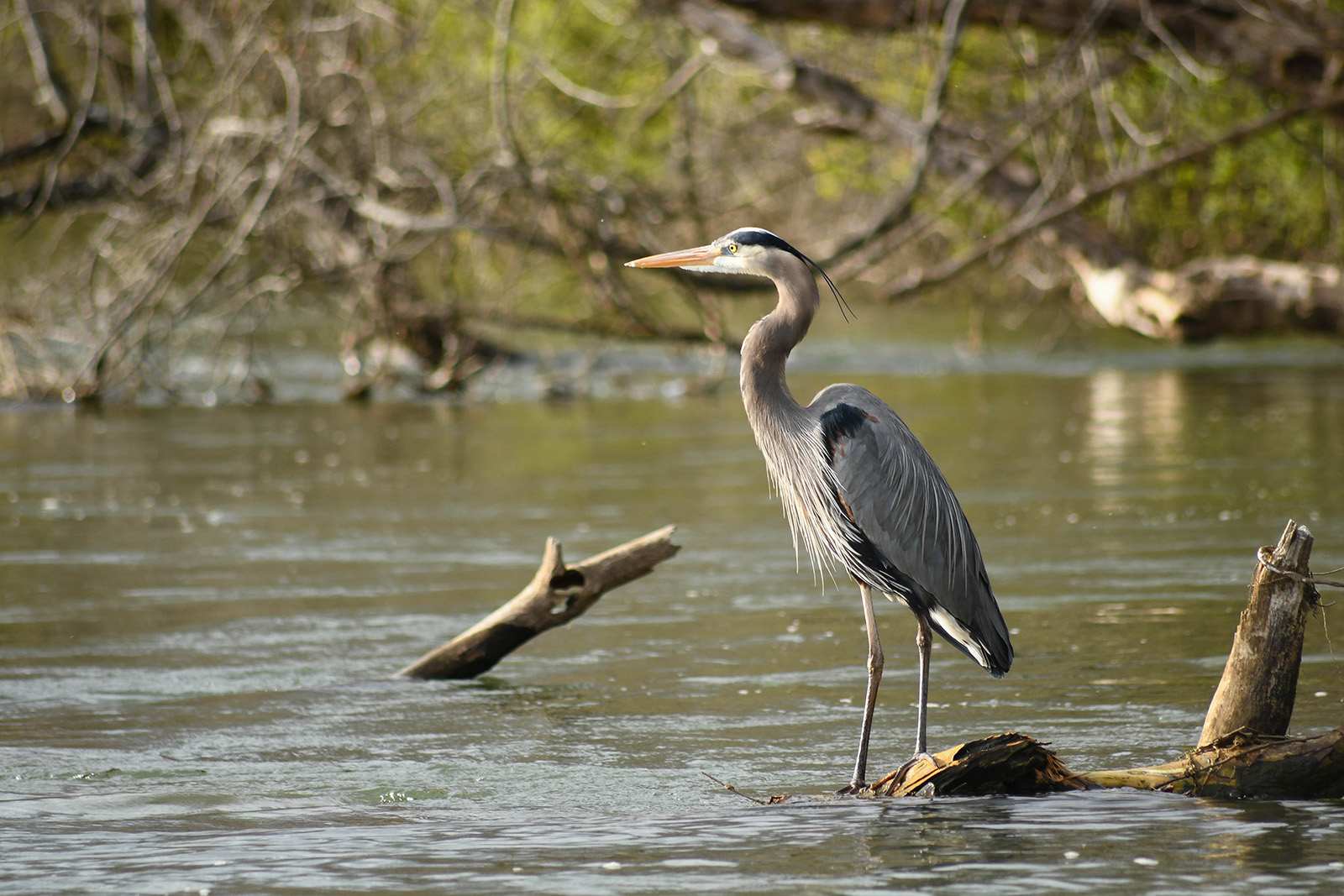By Matt Reilly
Photos by Matt Reilly
The Whitethorne Boat Ramp on Virginia’s New River is undoubtedly the ancient river’s most popular access within the Old Dominion, and for good reason. Just a short drive from Blacksburg, Christiansburg, and Roanoke, the Whitethorne ramp provides anglers, paddlers, power boaters, wildlife watchers, and hunters alike access to one of the most dynamic reaches of river in the region.
Visitors can find the Whitethorne ramp located on river right, across the railroad tracks at the end of Route 623 (Whitethorne Road), just a short drive from Price’s Fork. Parking is allowed only in the paved lot on the river side of the tracks and can become quite limited on weekends during popular times of year. The well-maintained concrete ramp is perfect for launching everything from kayaks and canoes to larger power boats.
Whitethorne provides immediate access for boaters to expansive flatwater, interrupted by few minor riffles. For this reason, this is the most popular access point on the lower New River for power boaters—jet boaters, in particular—who can safely navigate several miles upstream and downstream from the ramp.

Expansive pools in this stretch of river make Whitethorne the most popular destination on the river for musky anglers, who use this access point year-round, with the exception of the Dog Days, when musky are seeking refuge from summer’s hot water. Excellent smallmouth fishing can be found in this reach, too, and the pool areas also provide some panfishing opportunities.

Paddlers and floating anglers can use Whitethorne as a take-out for an 8.5-mile float beginning at the Peppers Ferry Bridge in Fairlawn, where an informal access exists under Rt. 114, on the south side of the highway on river left. A series of ledges meet the paddler at the outset of the float.
An important note regarding this stretch of river, is the presence of the Radford Army Ammunitions Plant (locally referred to as The Arsenal), which owns one or both banks along all but the very beginning of the Arsenal float. Keep an eye out for bright red Virginia Department of Wildlife Resources (DWR) signs and older Army Ammunition Plant signs that indicate Army property. Guard towers will catch your eye, too.

Setting foot on the bank here is prohibited, as is waterfowl hunting where signs indicate. By the time you pass under the railroad bridge a little over a mile into the float, Army property is on river right.
Arsenal Falls is a Class II ledge system that lies about two miles into this float. Though it may not look like much, it has claimed several lives and should be navigated with caution. The rapid can be scouted and portaged on river right.

More flatwater, bordered by Army property, persists until the takeout at Whitethorne on river right.
Floats from Whitethorne downriver into Giles County traverse some of the more dramatic features of the lower New River. Flatwater persists for four miles downriver from the ramp, beginning as the relatively shallow Whitethorne Pool, and morphing into a much wider, deeper pool as the river flows past Belspring.
The river’s gradient picks up as it approaches the small town of Parrott. Shallow ledges span the width of the river as it spreads out to its widest point in the state. This area may very well be the most popular section of river for wading anglers on the lower New because of its depth, and floating this section can become tricky during low water periods.
Shallow, ledgy habitat characterizes the remainder of the float, until the river pours over the Class II – III McCoy Falls on the Montgomery/Giles County Line.
Informal access points exist along Rt. 600 at Parrott on river left, and off of Rt. 625 just below McCoy Falls on river right. To take out at McCoy, paddlers will have to cover seven miles. Taking out at Parrott shortens the float by two miles.
Rivergoers should be aware that the water level and streamflow of the lower New River is governed by Appalachian Power Company at Claytor Lake Dam in Radford. As such, water levels can change without warning, and it’s a good idea to check river conditions via the USGS streamflow gauge in Radford before making a trip.
Waterfowl hunting is quite popular surrounding Whitethorne, as well, since power boats can be used to access a long stretch of the river. Hunters utilizing paddlecraft can hunt the islands and back channels of the Parrott area by floating downstream from Whitethorne. Keep in mind that waterfowl hunting is prohibited where the Radford Army Ammunitions Plant owns both banks of the river. Large red DWR signs mark these areas.
The 4,080-acre Army Ammunitions Plant property that is bisected by the river is largely wooded and boasts a bounty of wildlife. White-tailed deer, river otters, raccoons, wild turkeys, and fox squirrels are all common mammalian sightings for wildlife viewers along this stretch of river. The usual riparian bird species—belted kingfishers, great blue herons, and wood ducks—are also regular sights. During their summer migration, great white egrets are easy to pick out against a backdrop of green foliage. The smaller, more camouflaged green heron, which arrives on the New River’s banks in the spring after wintering further south, are harder to spot.

The usual New River Valley songbird assemblage can be observed at the Whitethorne boat ramp. Of particular interest to birders is the presence of the eastern kingbird, warbling vireo, cedar waxwing, Baltimore oriole, orchard oriole, yellow-throated warbler, northern parula, and yellow warbler. The pool habitat between the boat ramp and the shallow, ledgey habitat near Parrott is particularly attractive to a host of diving ducks, including the redhead, canvasback, ring-necked duck, lesser scaup, and bufflehead. In the winter, ring-billed gulls migrating to areas with open water settle on the New River near Whitethorne as well, possibly attracted in large part to the nearby food source of alewives in Claytor Lake, and other baitfish in the New River, itself.
Whether you’re an angler, paddler, hunter, or wildlife watcher, the Whitethorne boat ramp provides access to a section of the New River ripe with opportunity just waiting to be explored.
Matt Reilly is a full-time freelance writer, outdoor columnist, and fly fishing guide based in southwest Virginia.

